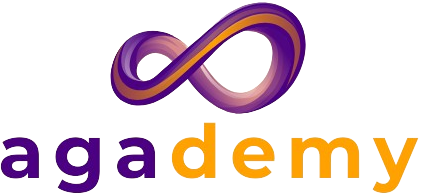
Medication Safety in Healthcare Settings
Overview
“Medical Safety in Healthcare Settings” is a comprehensive course designed to equip healthcare professionals with the knowledge and skills to ensure a safe environment for patients and staff. Covering topics from infection control to emergency response, this course provides practical strategies to promote safety and comply with regulatory guidelines. Through engaging videos and interactive exercises, participants will learn to identify and mitigate risks, fostering a culture of safety within healthcare facilities.
audience: Healthcare Professionals
responsibilities: Instructional Design, Action Mapping (Needs Analysis), Storyboarding, Visual Design, mockups, eLearning Development
tools: Articulate Storyline, CapCut, MindMup, Powerpoint
KPI: By the end of the next quarter, the compliance rate with established medical safety protocols among healthcare professionals will increase by 20% as a result of completing the “Medical Safety in Healthcare Settings” course, ensuring a safer environment for patients and staff.


process: analysis
I followed the structured steps of the ADDIE model to carefully tweak each stage of my process. This ensured that the learning experience looked, felt, and contained content that met top-notch standards. Before finishing everything up, I created an action map, mapped out a storyboard, designed visual mockups, and built an interactive prototype.
Step 1: Identifying the goal
At the outset of developing the “Medical Safety in Healthcare Settings” course, I initiated a brief discussion with stakeholders to understand their expectations. My main priority was to define the business goal.


Step 2: Specifying the audience and creating learner personas
In this step, together with the client, I focused on getting to know who would benefit from the “Medical Safety in Healthcare Settings” course. We created detailed learner personas, painting a clear picture of the healthcare professionals this course was designed for. This helped us tailor the content to their specific needs and learning preferences, ensuring maximum engagement and effectiveness.
Step 3: Identifying the main challenge
In this phase, the Client and I assessed the existing medical safety protocols and practices within healthcare settings. By conducting thorough evaluations and audits, I gained insights into the strengths, weaknesses, and areas for improvement. This analysis provided a clear understanding of the current state of medical safety and served as a foundation for developing targeted interventions to enhance safety standards.

Step 4: root cause analysis, solutions and people responsible for their implementation
According to Cathy Moore, a seasoned instructional designer, consultant, and author of “Map It,” the primary challenges can be attributed to the following aspects: environment, knowledge, skills and motivation.
During our discussion, we delved into the underlying issues contributing to the challenges faced by SMEs, possible solutions and people responsible for their implementation

As you can see, the course was only a part of the solution. There are other root causes that need to be tackled as well to bring optimal results.
For the next parts, I will focus on the online course only, as this is the part I was responsible for.

process: design
Step 1: scoping
Scoping a project involves defining clear learning objectives and outlining topics and sections.


Step 2: wireframing
The next step is to create wireframing, which involves sketching out the structure and layout of the course content.
Step 3: Screenplanning
Screenplanning involves mapping out the entirety of the course, detailing its core components and providing concise descriptions for each slide or screen. Additionally, icons are employed to signify whether slides incorporate text, audio, video, or images, and denote the type of interaction, if applicable.

Step 4: style guide
A style guide establishes consistent visual and design standards for a project. By following a style guide, designers ensure a unified look and feel, enhancing the overall user experience and brand identity.
Step 5: storyboarding
Storyboarding is the process of visually outlining the narrative flow and structure of a project, typically through sequential images or sketches. It involves mapping out key scenes, interactions, and transitions to provide a visual blueprint for the project’s development.

process: development
Interactive Prototypes and Full Development
Interactive prototypes play a pivotal role in shaping the “Medical Safety in Healthcare Settings” course. Using Articulate Storyline 360, I brought designs to life, ensuring functionality and user experience were at the forefront. From triggers to animations, each element was carefully integrated to enhance engagement.
After confirming the prototype’s appearance and functionality met expectations, I immersed myself in full development, fine-tuning slides to ensure seamless integration of animations, sounds, visuals, and triggers. Prioritizing user feedback was crucial in enriching the learning experience.
Additional Features
downloadable certificate: Upon completing the course, learners can download a personalized certificate as recognition of their achievement. This certificate includes course details and the learner’s name, validating their proficiency and dedication. It serves as a tangible symbol of success, motivating learners to continue their educational journey with confidence.
engaging sound effects: Throughout the experience, carefully chosen sound effects enrich the learner’s immersion, adding realism to their journey. From celebratory sounds during sales victories to affirming tones upon selecting correct answers, each sound serves as positive reinforcement, heightening engagement.
real-life scenarios: Learners engage with authentic medical safety incidents, presented as interactive case studies. By navigating these scenarios, learners identify risks and develop effective solutions, gaining practical insights applicable to their roles
interactive quizzes: Integrated quizzes at the end of each module provide learners with immediate feedback on their understanding of key concepts. With interactive elements such as drag-and-drop, multiple-choice, and scenario-based questions, learners can test their knowledge and reinforce learning outcomes.
Incorporating these additional features elevates the learning experience, fostering deeper engagement, critical thinking, and skill development among learners.








